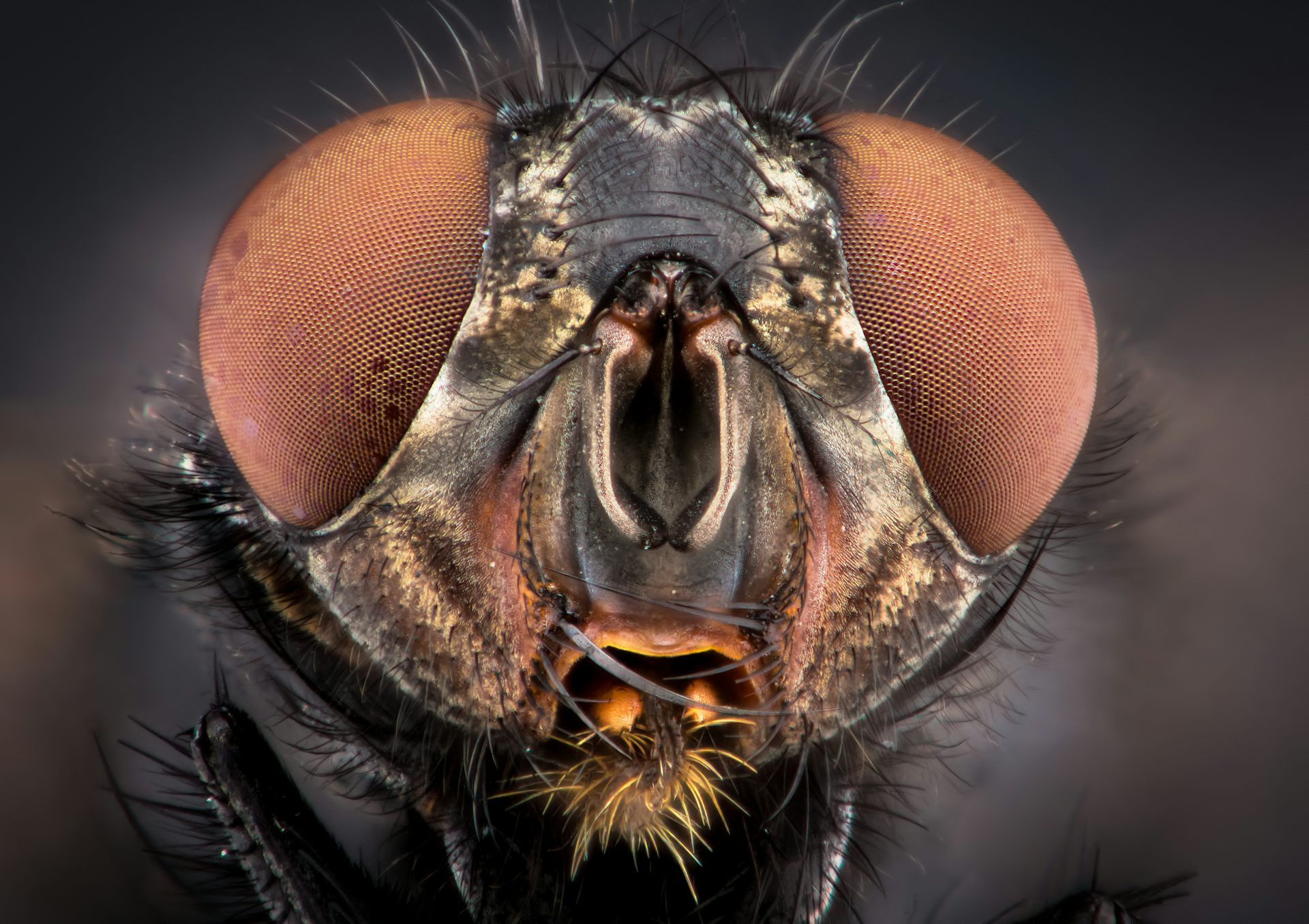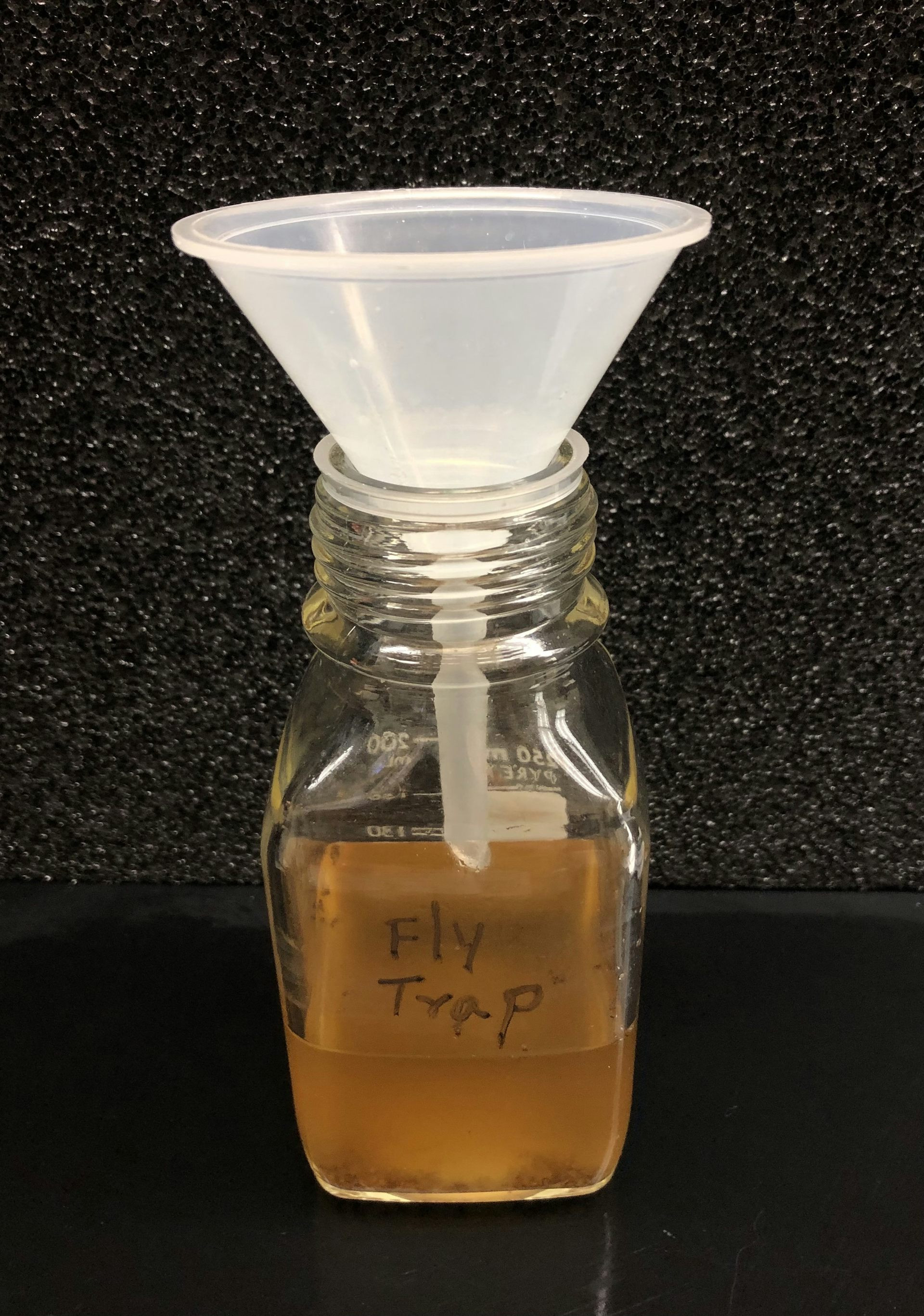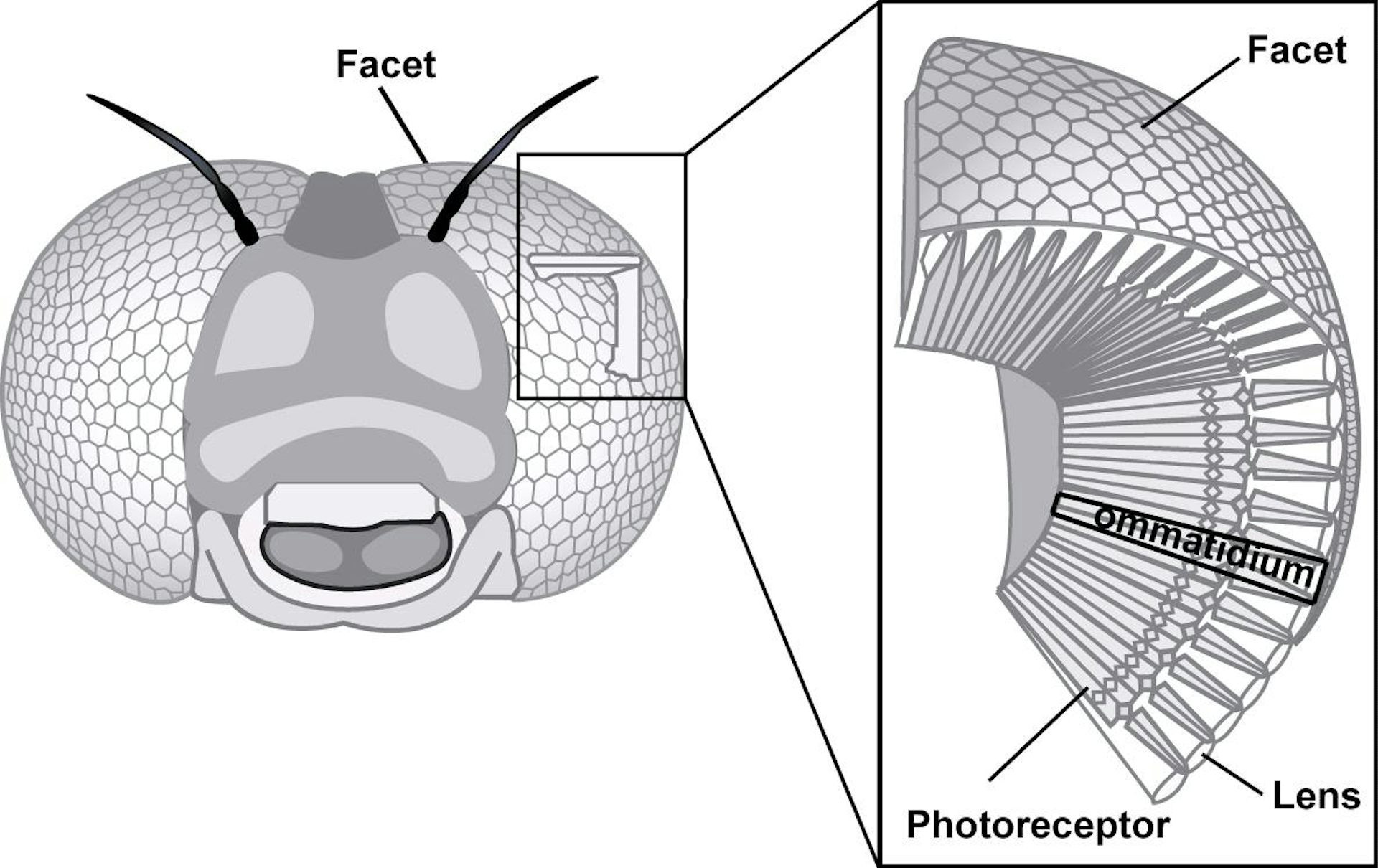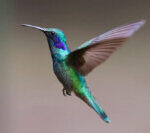Sitting outside on a pleasant evening can quickly become less enjoyable when flies and mosquitoes appear, leading to the inevitable swatting game. Despite possessing minuscule eyes and a brain significantly smaller than a human’s – roughly a million times smaller – flies exhibit an uncanny ability to dodge almost every attempted swat. This remarkable agility is largely attributed to their fast, sophisticated eyesight, coupled with unique neural mechanisms that give them a visual edge in our world.
Our research delves into the fascinating realm of insect flight and vision, aiming to unravel how these tiny creatures process visual information to execute complex behaviors, most notably, their lightning-fast escapes from our swats. Understanding How Flies See is key to appreciating their survival strategies and the intricacies of their visual world.
 Close-up of a house fly showcasing its compound eye structure, illustrating how flies see the world.
Close-up of a house fly showcasing its compound eye structure, illustrating how flies see the world.
The Speed of Sight: Compound Eyes and Rapid Vision
Flies are equipped with compound eyes, a visual system drastically different from our own. Instead of forming a single, unified image through a single lens like human eyes, flies construct images from an array of facets. These facets are essentially numerous individual lenses that focus incoming light onto clusters of photoreceptors, the light-sensitive cells within their eyes. Each facet contributes a single pixel to the fly’s overall vision.
The visual world perceived by a fly is characterized by a relatively low resolution. This limitation stems from the physical constraint of their small head size, which can only accommodate a finite number of facets – typically ranging from hundreds to thousands. Unlike humans who benefit from millions of pixels for sharp vision, flies operate with a coarser visual input. However, despite this lower resolution, flies excel at perceiving and processing rapid movements with exceptional speed. This is a crucial aspect of how flies see and react to their environment.
Unraveling Fast Motion Perception in Flies
The speed at which photoreceptors process light directly influences how animals perceive rapid motion. Humans, for instance, can discern a maximum of approximately 60 discrete flashes of light per second. Any faster, and the flashes appear to merge into a continuous, steady light. This ability to perceive distinct flashes is influenced by lighting conditions and the specific region of the retina being used.
Consider LED lights; they emit rapid flashes of light, often too quick for humans to perceive as flicker, appearing as constant illumination. However, if you shift your gaze to your peripheral vision, you might detect a flicker. This is because peripheral vision, while offering lower resolution, processes light more rapidly, mirroring fly vision in this aspect.
Remarkably, certain fly species can perceive up to 250 flashes per second, roughly four times the rate of human vision. Imagine taking such a fly to a movie theater. The movie, presented at 24 frames per second to appear smooth to us, would be perceived by the fly as a series of still images, much like a slideshow. This exceptionally fast vision is a critical adaptation, enabling flies to react swiftly to threats, prey, obstacles, and, of course, our swatting attempts. Understanding this high flicker fusion rate is fundamental to grasping how flies see and navigate their fast-paced world.
Our research indicates that flies experience a reduction in their ability to perceive fast movements in dim lighting conditions. While this might seem like an opportune moment to swat them, it’s important to remember that human vision also suffers in low light, diminishing our ability to detect quick, sharp movements. In essence, in the dark, both predator and prey become visually handicapped.
When flies and mosquitoes navigate in low-light environments, they adopt erratic, twisty flight paths as a defense mechanism against swats. They also rely on non-visual cues, such as sensory information from small hairs on their bodies that detect subtle changes in air currents generated by an approaching hand. These adaptations highlight that how flies see is just one part of their complex evasion strategy.
Neural Adaptations for Vision: Tricks of the Fly Brain
The question arises: why does fly vision slow down in darkness? Similar to human vision, flies experience a decline in visual acuity and speed in low-light conditions. This is fundamentally due to the reduced availability of photons in dim environments. Photons are the fundamental particles of light, and like cameras and telescopes, eyes rely on them to construct images.
However, unlike sophisticated cameras that can adjust lens aperture to gather more light in dark settings, animals cannot simply swap out their eye optics. Instead, they employ a neural strategy called summation. Summation involves pooling inputs from neighboring pixels or extending the duration of photon sampling to form an image in low light.
While summation helps capture more photons, it comes at the cost of image sharpness. This is analogous to taking photographs with high ISO film (grainy) or slow shutter speeds, resulting in blurrier images but preventing underexposure. Flies, particularly smaller species, experience slower vision in the dark because they are essentially waiting for a sufficient number of photons to ensure visual certainty. This neural trade-off is a crucial aspect of how flies see in varying light conditions.
Flight and Maneuverability: Putting Vision into Action
Beyond quickly detecting looming threats, flies must be able to initiate rapid escape maneuvers. This necessitates both swift takeoff preparation and agile flight adjustments. Upon visually identifying a threat, fruit flies, for instance, adjust their body posture in a mere one-fifth of a second before initiating takeoff. Predatory flies, such as killer flies, coordinate their legs, wings, and halteres – dumbbell-shaped, vestigial wings used for sensing in-air rotations – to efficiently capture prey mid-flight. This intricate coordination between vision and motor control underscores how flies see and react in real-time.
Practical Implications: Can You Outsmart a Fly?
To successfully swat a fly, your strike must be faster than its visual detection and reaction time. While practice might improve your swatting technique, flies have honed their escape abilities over millions of years of evolution. Therefore, instead of relying on swatting, adopting alternative fly management strategies is often more effective.
Consider using fly traps, such as simple homemade traps baited with apple cider vinegar and beer. Placing a funnel in the bottle neck facilitates entry but hinders escape. For mosquito control, eliminating stagnant water sources around your home—in plant pots or open containers—is crucial to disrupt their egg-laying sites and reduce populations. It’s also advisable to avoid broad-spectrum insecticides, as they can harm beneficial insects like bees and butterflies alongside their intended targets. Understanding how flies see and behave can guide us towards more effective and ecologically conscious pest management strategies.
 Homemade fruit fly trap using apple cider vinegar and beer, a practical solution to control flies based on understanding fly behavior.
Homemade fruit fly trap using apple cider vinegar and beer, a practical solution to control flies based on understanding fly behavior.
In conclusion, flies possess a remarkable visual system adapted for speed and survival. Their compound eyes, rapid motion perception, and neural processing strategies allow them to navigate a world perceived much faster than our own, making them incredibly adept at evading threats. Understanding how flies see not only deepens our appreciation for the intricacies of the natural world but also provides valuable insights into the remarkable sensory adaptations of even the smallest creatures.
 Diagram of a fly's compound eye, highlighting hexagonal facets and photoreceptor layer, explaining the mechanism of fly vision.
Diagram of a fly's compound eye, highlighting hexagonal facets and photoreceptor layer, explaining the mechanism of fly vision.